Recent Articles
Popular Makes
Body Types
2020 McLaren 600LT Road Test and Review
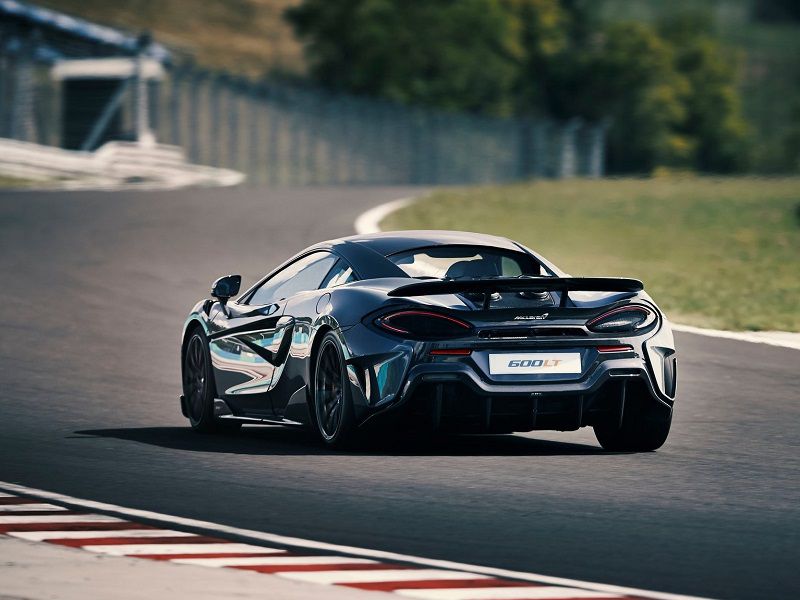
2020 McLaren 600LT Grey Driving Rear Three Quarter ・ Photo by McLaren
McLaren is probably best known for the F1, a supercar it created in the 1990s. Some still say it’s the best car ever made. But the British automaker was originally founded back in the 1960s by race car driver Bruce McLaren, a New Zealander, and the company’s machines have been winning races all over the world ever since.
About 10 years ago, after a long hiatus from street-legal vehicles, McLaren began building its own exotic sports cars again, and today it offers a full line of powerful mid-engine two-seaters. One of its most extreme is the 2020 McLaren 600LT, a track-ready 592-horsepower monster that can reach 60 mph in less than 3 seconds. It’s one of the fastest, most exclusive cars on the road and it competes with a handful of other mid-engine supercars such as the Ferrari 488, Lamborghini Huracan Evo, Acura NSX, and Audi R8.
Raw and Track-Ready
The truth is most McLarens are quite similar to one another. They’re all about the same size, they all have two seats, and they’re all mid-engine and powered by turbocharged V8s. It’s easy to think the company keeps building the same car over and over, changing only the name and a few other details. Although there is some truth to that, the differences between its models can be felt from behind the wheel, and the 2020 600LT is like no other McLaren.
This car is something special. It’s not just one of the coolest, fastest, and best-performing cars you can buy at any price, but it also delivers one of the most intense driving experiences in the world. That’s really what you’re paying for here. Plenty of cars can bring the speed. The 600LT makes you feel it. If that’s what you’re after, then the 2020 McLaren 600LT is a very desirable overall choice.

Photo by McLaren
No All-Wheel Drive
Standard speed equipment includes huge Pirelli PZero performance tires, enormous aluminum wheels, and massive cross-drilled carbon-ceramic brakes, which are some of the best in the world. Our test car was also equipped with a long list of extra-cost options, including soft-close doors, special paint, an upgraded audio system, carbon fiber trim inside and out, and a nose lift system that allows you to raise its front end to clear driveways and speed bumps. Its final price spiked over $262,000.
Unlike most other manufacturers of exotic sports cars, however, McLaren has not embraced the benefits of all-wheel drive. Most of its rivals, including Lamborghini, have made the technology standard, but all McLarens remain rear-wheel drive. This gives the 600LT a more lively chassis, which can be enjoyed by highly skilled drivers, but it also makes it far more difficult to drive fast for the rest of us — especially in foul weather.
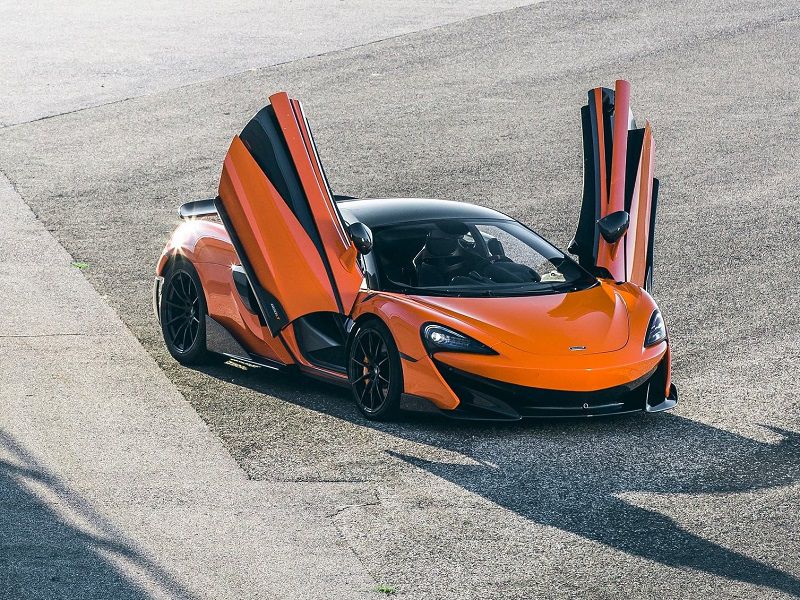
Photo by McLaren
Two Turbos and 592 Horsepower
The McLaren 600LT shares its 3.8-liter V8 with some of the company’s other models. The twin-turbocharged engine produces 592 hp at 7,500 rpm and 457 lb-ft of torque. The most powerful McLarens are equipped with a similar but larger 4.0-liter V8 packing over 600 hp, but the 600LT is light. It only weighs about 3,150 lbs, so it remains one of the automaker’s quickest models, reaching 60 mph in less than 3 seconds. It also covers the quarter mile in less than 11 seconds and has a top speed of 201 mph.
That kind of thrust goes beyond any normal person’s sense of movement. Inner ears are adversely affected; neck and abdominal muscles tighten instinctively to resist the considerable g-loads. To intensify the experience further, McLaren also hard mounts the engine to the chassis, increasing vibration. It feels like the engine is inside the cabin with you.
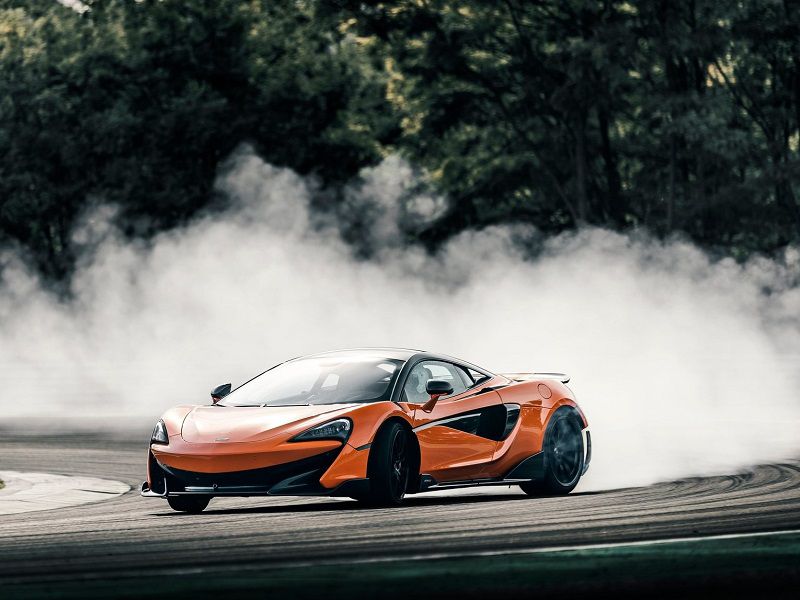
Photo by McLaren
Neatest Exhaust on the Planet
McLaren has also given the 600LT's exhaust system the world's greatest cool factor. It’s not only loud enough to wake the neighbors — they’ll hear you coming from a half-mile away — but exhaust exits up through the supercar's hood ahead of its large rear spoiler. You can actually see the heat waves in your rearview mirror as the V8’s spent hydrocarbons contribute to climate change.
The LT in the 600LT name stands for Long Tail, but the supercar’s compact size may surprise you. It looks larger in photos than it really is. Few cars have a greater ability to turn heads. People notice when you drive by in a McLaren, and when you stop they ask about it and take pictures with their phones. Let them sit in it and you’ve made a friend for life. Don’t be insulted if they compliment your new Ferrari. The supercars doors also make an impression. They open up and out, sort of like the wings of a butterfly. It’s quite dramatic, but they can be an issue in tight parking lots. Climbing in and out of the supercar can also be awkward. A strong core makes it easier.
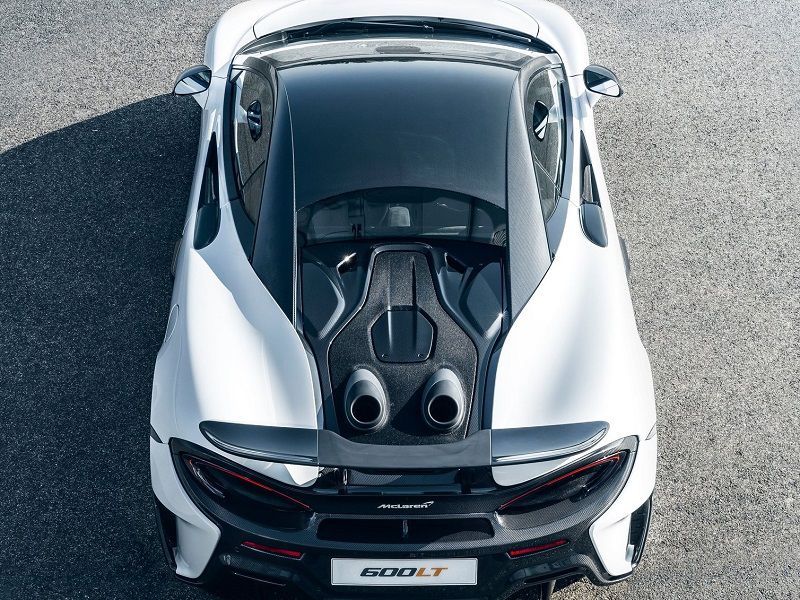
Photo by McLaren
Racecar Handling
There’s a go-kart quality to the 600LT’s dynamics. Its conventional coilover suspension uses much of the same hardware as some of the company’s other models, but it has all been retuned for even more extreme performance. Some McLarens are equipped with a more technologically advanced hydropneumatic suspension setup, which uses hydraulics, but it adds considerable cost and weight so it isn’t used on this model.
Reactions are immediate and its grip on the road is herculean. McLaren has stiffened the suspension, illuminating all slop, all extra movement. The 600LT feels like it’s glued to a smooth mountain road, carving its way through corners with no body roll. There’s so much grip that it’s difficult to find the supercar's limits on a public road. Our survival instinct kicked in before we ever reached the required speed. The side effect of all this agility is a harsh ride. The 600LT transfers the road right to your backside. Every pebble, every pothole, every inch of asphalt is felt. Remember, its suspension is tuned for the racetrack, not for road trips.
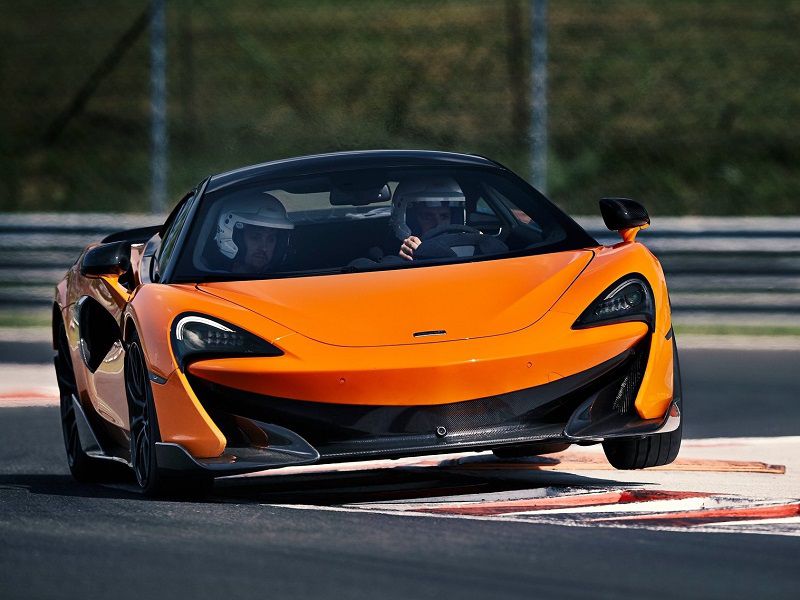
Photo by McLaren
Love the Steering, Hate the Brakes
Steering feel is a lost art. Its demise is well-documented. Even BMW, the company that practically invented steering feel, has forgotten what it is and how wonderful it can be. But McLaren hasn’t. The 600LT steers with a mechanical purity long abandoned by most automakers. Your hands feel hardwired to its front tires, their hold on the road communicated clearly and precisely.
This gives you the confidence to go faster, to hold your line, to enter corners with a greater commitment. You know when a small adjustment is needed and you can deliver it precisely. It also creates a transformative mental connection between you and the car. You eventually get lost in the drive, finding a meditative state and a spiritual rhythm with the machine. Unfortunately, the McLaren’s brake pedal is as numb as a pile of rocks. There’s plenty of stopping power, and the brakes resist heat incredibly well, but there’s just no feel.
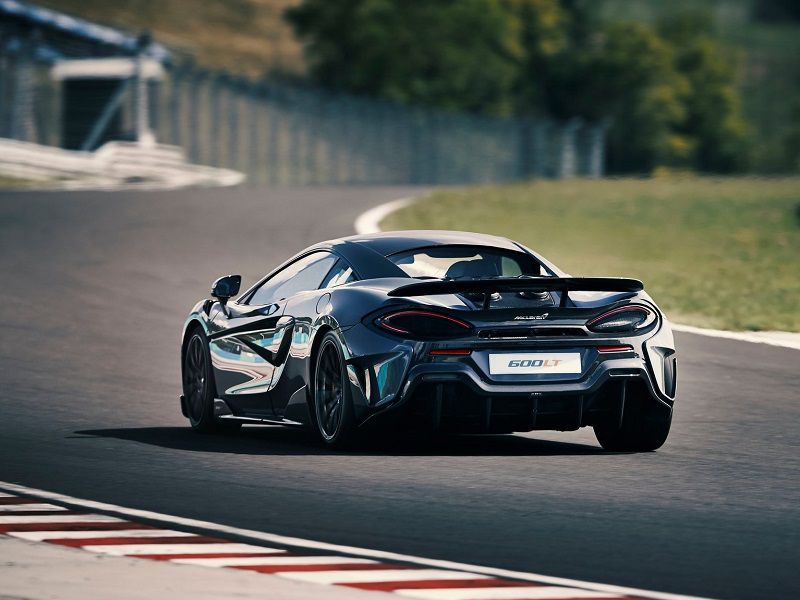
Photo by McLaren
Adjustable Dynamics
McLaren does allow you to adjust the 600LT’s dynamics with knobs and buttons on its console. There are four settings for the suspension and another four for the response of its throttle and transmission. In the most relaxed setting the 600LT is already quite intense, but it can be driven every day if your commute is short and you enjoy mild sadomasochism.
Fuel economy in a car like this doesn’t really matter much, but the 600LT does feature start/stop, which shuts off its engine at idle to safe fuel. And its fuel economy may surprise you. Its EPA ratings are 15 mpg in the city and 23 mpg on the highway. We averaged 17.2 mpg over 300 miles of mixed driving. Also, McLaren doesn’t weigh down the 600LT with a list of electronic safety systems. Despite its price, the supercar lacks radar cruise control and other driver aids like lane-keeping assist and a rear-cross traffic alert.
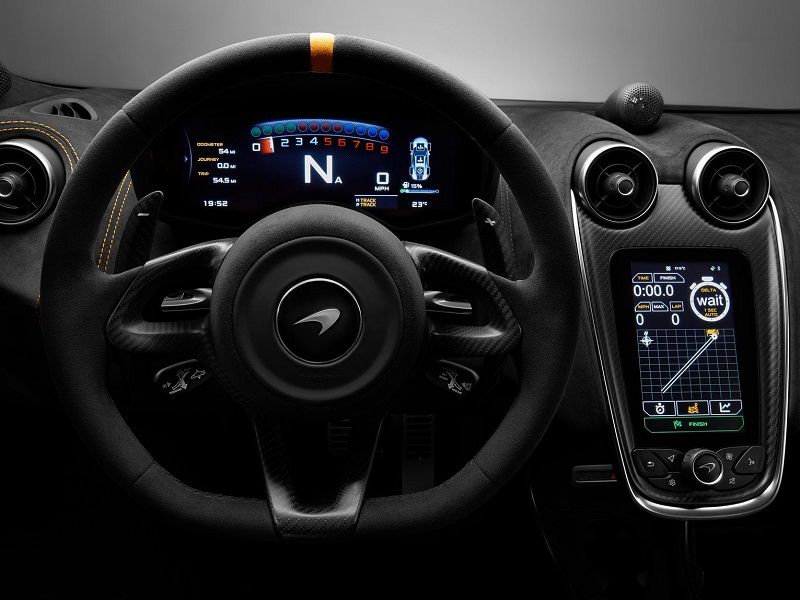
Photo by McLaren
Finely Crafted Interior
Although the interior of the 2020 McLaren 600LT is finely crafted with exceptional build quality, and the materials are proper for the supercar’s lofty price point, it’s not exactly luxurious inside. Its seats would be at home in a racecar. They’re thinly padded carbon fiber tubs, shaped to perfection, but narrow for some and hard for all. They’re adjustable for height and the steering wheel tilts and telescopes, which helps you find the right driving position, but after 100 miles you want out to stretch your legs.
The dashboard design is simple and clean, but also clever and intricate with few buttons. The instruments are digital, but uncomplicated. McLaren puts everything important in the center, including the tachometer, speedometer, and gear readout. The infotainment screen isn’t huge but it’s large enough, though unfortunately the system isn’t as easy to use as it should be.
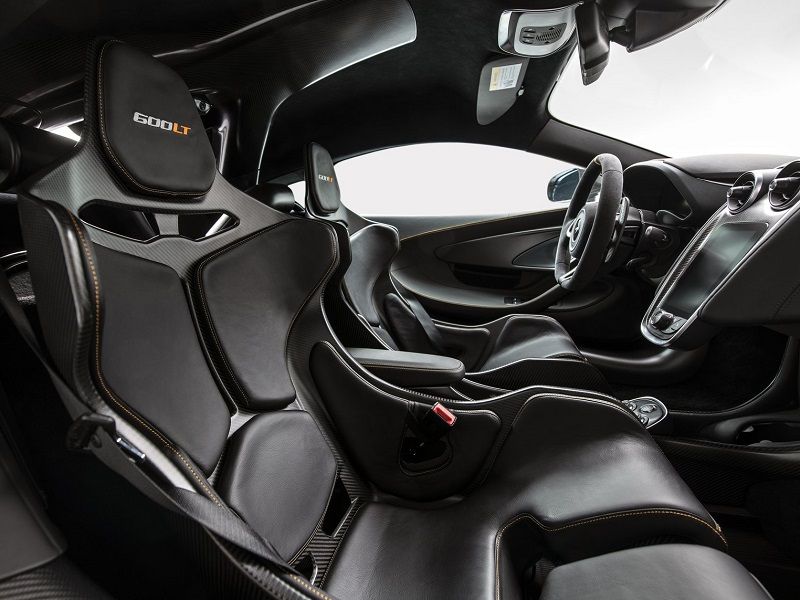
Photo by McLaren
Final Thoughts
The truth is most McLarens are quite similar to one another. They’re all about the same size, they all have two seats, and they’re all mid-engine and powered by turbocharged V8s. It’s easy to think the company keeps building the same car over and over, changing only the name and a few other details. Although there is some truth to that, the differences between its models can be felt from behind the wheel, and the 2020 600LT is like no other McLaren.
This car is something special. It’s not just one of the coolest, fastest, and best-performing cars you can buy at any price, but it also delivers one of the most intense driving experiences in the world. That’s really what you’re paying for here. Plenty of cars can bring the speed. The 600LT makes you feel it. If that’s what you’re after, then the 2020 McLaren 600LT is a very desirable overall choice.

Photo by McLaren